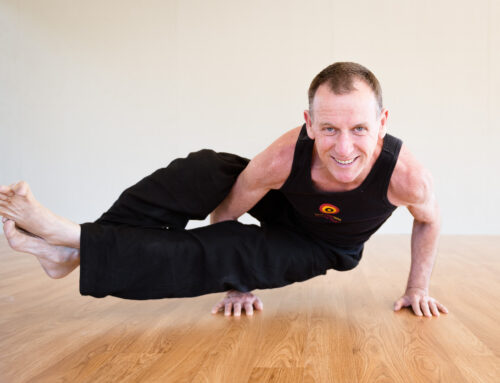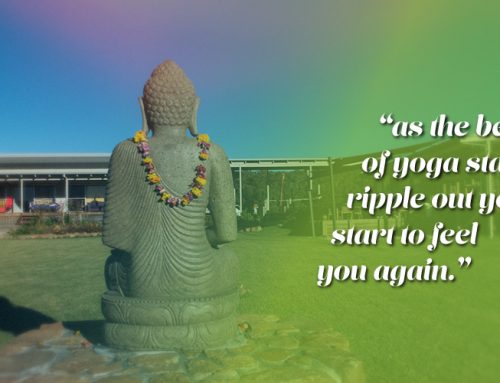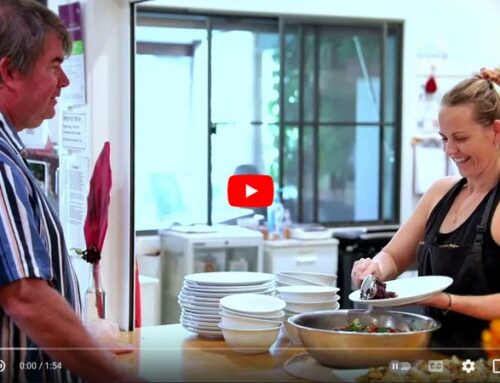Written by Pete Jackson
If someone told you there’s a new drug on the market promising a path to a life free of pain and suffering, how would you react? Would your logical and suspicious side immediately start asking questions as to how such a claim could be made? You’d probably want to know, ‘how does it work’, or ‘how much does it cost?’ Perhaps you’d merely question how any serious science could offer such a grand remedy, or wonder about the potential side effects of what must surely be a strong drug indeed!
What if you were told such a remedy existed within the practice of yoga, open to all, and with absolutely no side-effects! Something that represents a wonderful gift to share with others – a body of knowledge that can be used to guide others to live their lives with greater ease, enjoying enhanced health, with fewer ailments and less illness. Sounds too good to be true?
Yoga therapy offers this path, and is, for the yoga therapist, a wonderful tool which employs the fundamentals of yoga in a healing capacity to address any number of life’s everyday ailments.
Byron Yoga Centre Teacher Trainer, Maria Kirsten, is passionate about yoga therapy. She believes undertaking yoga therapy training is an important extension of what it is to be a yoga teacher. “Teachers of yoga therapy offer students a path to overcoming so many common lifestyle ailments,” Maria says. “You learn so much when you go out in the world as a teacher. But if you have an opportunity to help students deal with specific ailments, then that’s ‘real’ learning”.
Many teacher trainees may have encountered the dynamic and irrepressible energy that is ‘Maria’ as part of their level 1 or 2 teacher training courses. With her impressive knowledge of the human body in movement, and her experience working with people in a therapeutic context, it’s no surprise that Maria has again been invited to be one of the key teachers for the Yoga Therapy Teacher Training Course, which will run next year from July 11 – 22.
Maria has a lengthy and somewhat international association with yoga. American by birth, she’s called Australia home for the past fifteen years, the past 10 on the New South Wales north coast. Maria says she first realised the place of yoga in her life while studying at university in Washington DC in 1989. It was her mother who offered to assist Maria with the cost of her initial course perhaps having already felt it was something of a destiny for her daughter. Maria’s now practised as a teacher with an emphasis on yoga therapy since 2000 after gaining accreditation with Yogalates.
These days, in addition to working with teacher training students, Maria teaches regular classes for ‘householders’ or those who are in the ‘service of others’. Many who come to her class overlooking the ocean at Lennox Head spend much of their working day engaged in rigorous activity such as working as cleaners or in hospitality. Her class offers a unique blend of yoga and pilates, specifically designed to strengthen the core and mend bad backs that stem from this arduous lifestyle.
Maria says she’s looking forward to working alongside other experienced teachers to offer the yoga therapy teacher training in 2010. She sees it as an opportunity to further develop her awareness of what a yoga therapist can offer in a general class situation, while making sure the spirit of the teaching is playful and fun, which is her trademark teaching style. “Because that’s what teaching in Byron is fundamentally about, fun, while learning and sharing an awareness with each other,” she says.
So what actually is yoga therapy? According to Maria, “it’s a practice of yoga, such as meditation, breathing, chanting or postures, which goes beyond the physical in the service of alleviating suffering”. ‘Suffering’ can be defined as psychosomatic, spiritual, mental or physical. “We use the practice to address that suffering, to restore harmony, to help people gain greater flexibility in their lives and a greater ability to move out of pain.”
Our modern life doesn’t always cater for taking care of ourselves. Daily work-demands mean that we may overuse certain parts of our body. “People are the sum of what they do… our jobs, the relationships they’re in. Their mental health and outlook on life can all be in conflict,” explains Maria. “Yoga therapy helps address those underlying causes of conflict and pain, while a yoga therapy teacher sees people in the context of who they are to encourage change.”
Maria describes a case-study of a previous yoga-therapy client as a good example of how yoga can be used to fit in with people’s individual lives. The case study was a former teacher whose job involved driving long distances to deliver heavy boxes of books to schools. The woman, as a consequence, developed a weak lower back. “First question I asked ‘Do you like your job?’”, remembers Maria. “She didn’t want to change her job, so the alternative was to change her work practice.”
Maria designed a program around the woman’s unique needs and called it “car yoga”. The postures she prescribed for her client involved using her car as a prop! She could put her foot on the bumper and do a lunge. She could put her hands up on the roof rack and do a downface dog. To avoid bending that was already challenging her weaker lower back, Maria would have her “grab her box turn, step, step, bend her knees and put the box down, rather than twist.”
Maria explains a yoga therapist doesn’t tell people what to do. Her approach is to help people distinguish in their lives between that which is negative and detracting, and the positive – what needs to be sought and developed. “It’s less physical, more in line with asking those questions: ‘What can I change to apply the practice, and what strength do I need to develop and harness in order to go there?’”
In the Therapy Teacher Training Course, Maria says teachers will learn how to address students’ needs in such a way that they have the chance to make real practicable change, so they get a clear understanding of why their existing lifestyle is impairing their physical and emotional states.
“They get a chance to make a change for themselves, without having to prescribe to a radical lifestyle rethink. In yoga therapy training, I give students the bucket, the rod and the bait but not the fish,” says Maria. She says the idea behind the training is that teachers are left feeling capable and confident to pass on that experience to their students, who by coming to class have already “made a conscious decision themselves to make a change for the better”.
Suffering is highly unique to every individual. And since yoga isn’t always delivered one on one, yoga therapists can competently adapt their knowledge based on an awareness of their students’ needs in a general class. “A good teacher will offer options that give every student in the class some choices to tailor things to themselves,” says Maria. To do that, it’s really important to be highly present in the classroom. Maria feels it’s important to encourage yoga therapy teacher trainees to consider the thinking behind why they’re adapting the principals of teaching, rather than ask them to merely memorise a lot of information. In that way we better address the various needs of our students.
“No matter whether it’s a change of diet, or cutting back smoking, to not staying up too late, we guide our students to make the changes they identify need changing, but not all in the first session!” says Maria. “Our nervous system is nervous about change, so slow change is powerful and the best way to go.”
For Maria, as far as yoga therapy is concerned, a positive approach is best. “The focus is off your physical being and much more on what you’re wanting to be – a pain free vehicle.”
Join Maria in July at Byron Yoga Centre to further explore the principals and practices of yoga therapy. In keeping with the yoga therapy philosophies of flexibility and adaptablity, the Byron Yoga Centre Yoga Therapy Teacher Training is offered over an intensive 12 day format for Part 1, the face to face component, to fit in with teachers’ other commitments.



